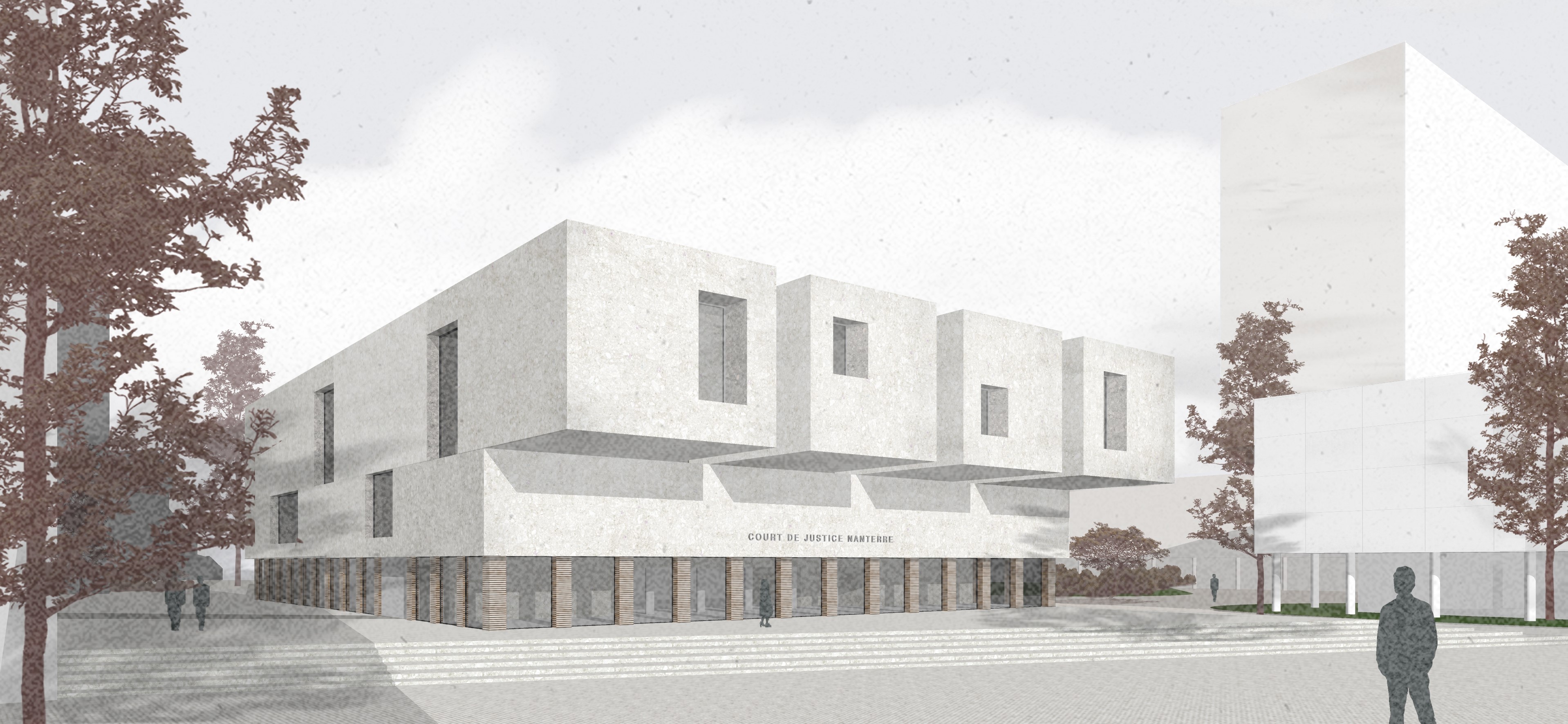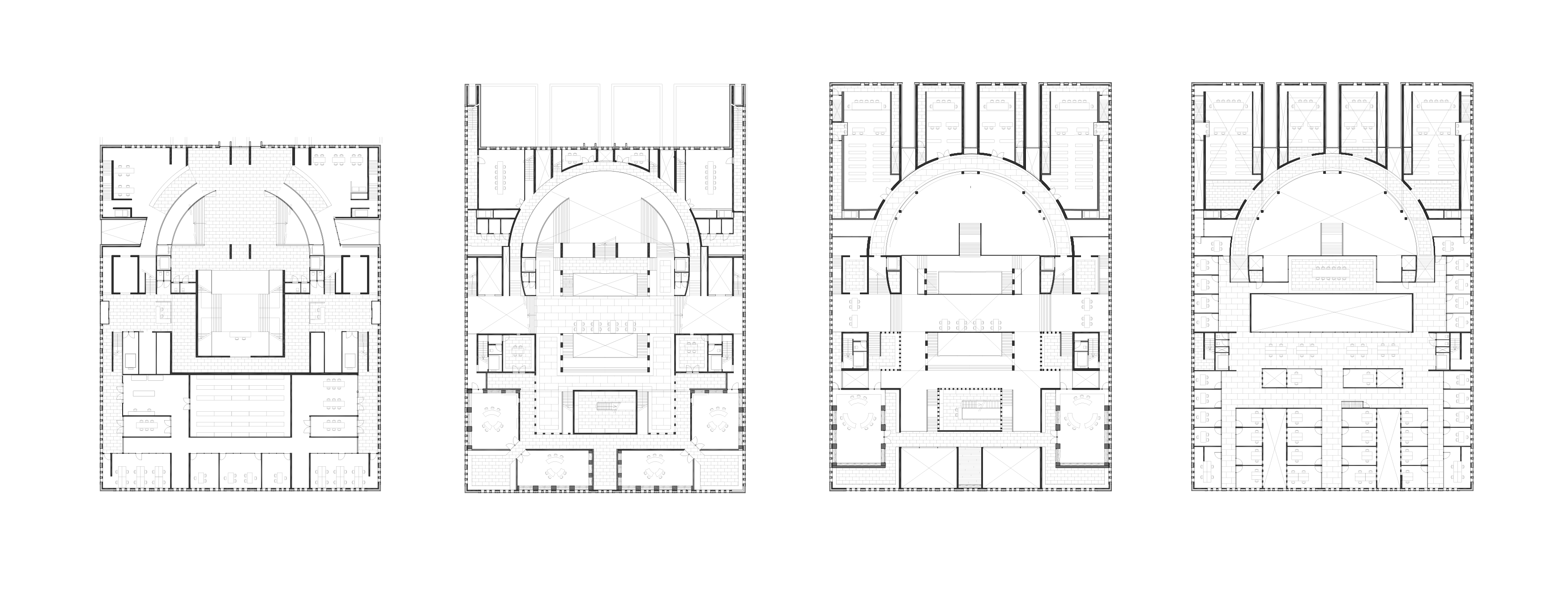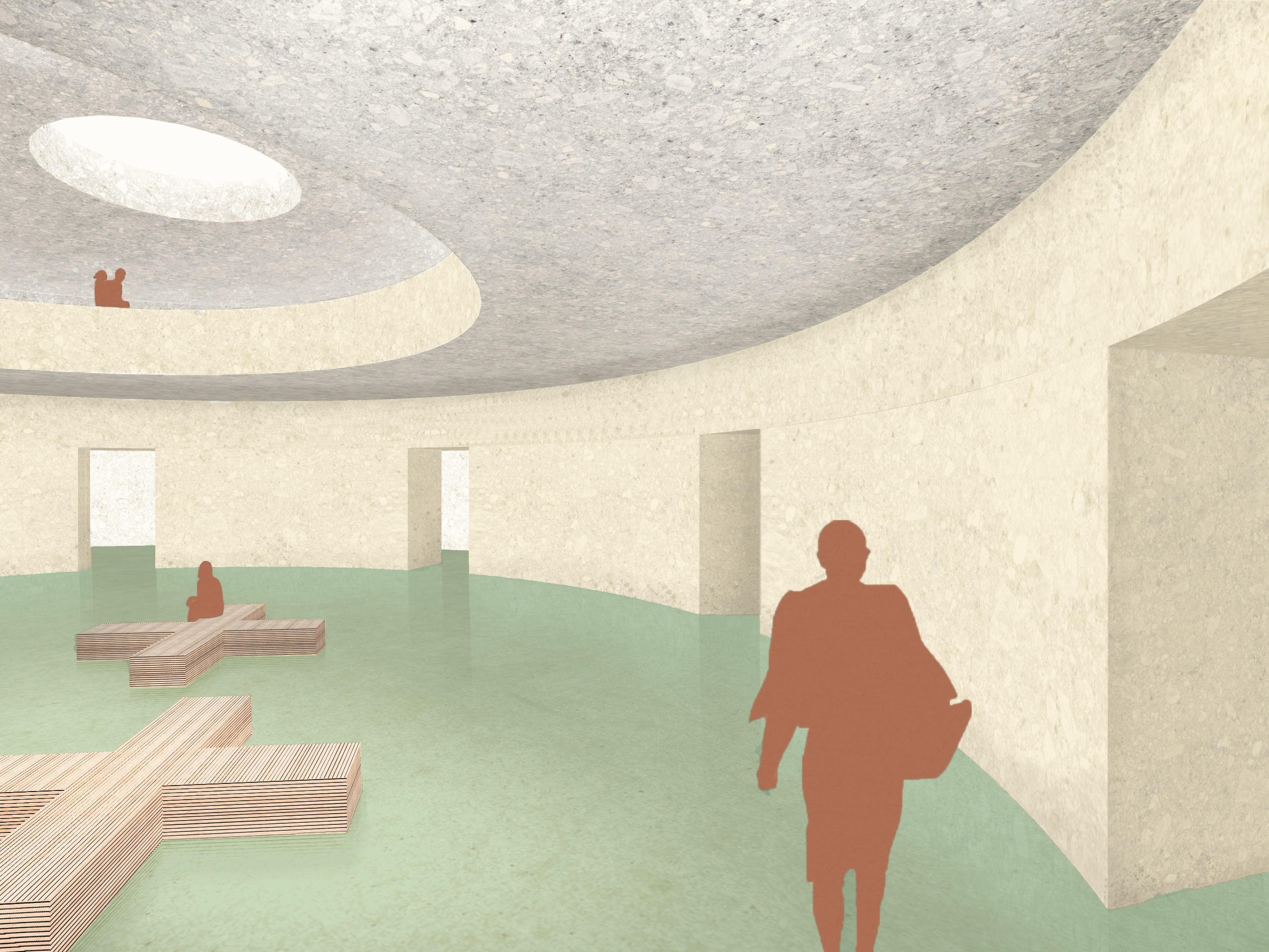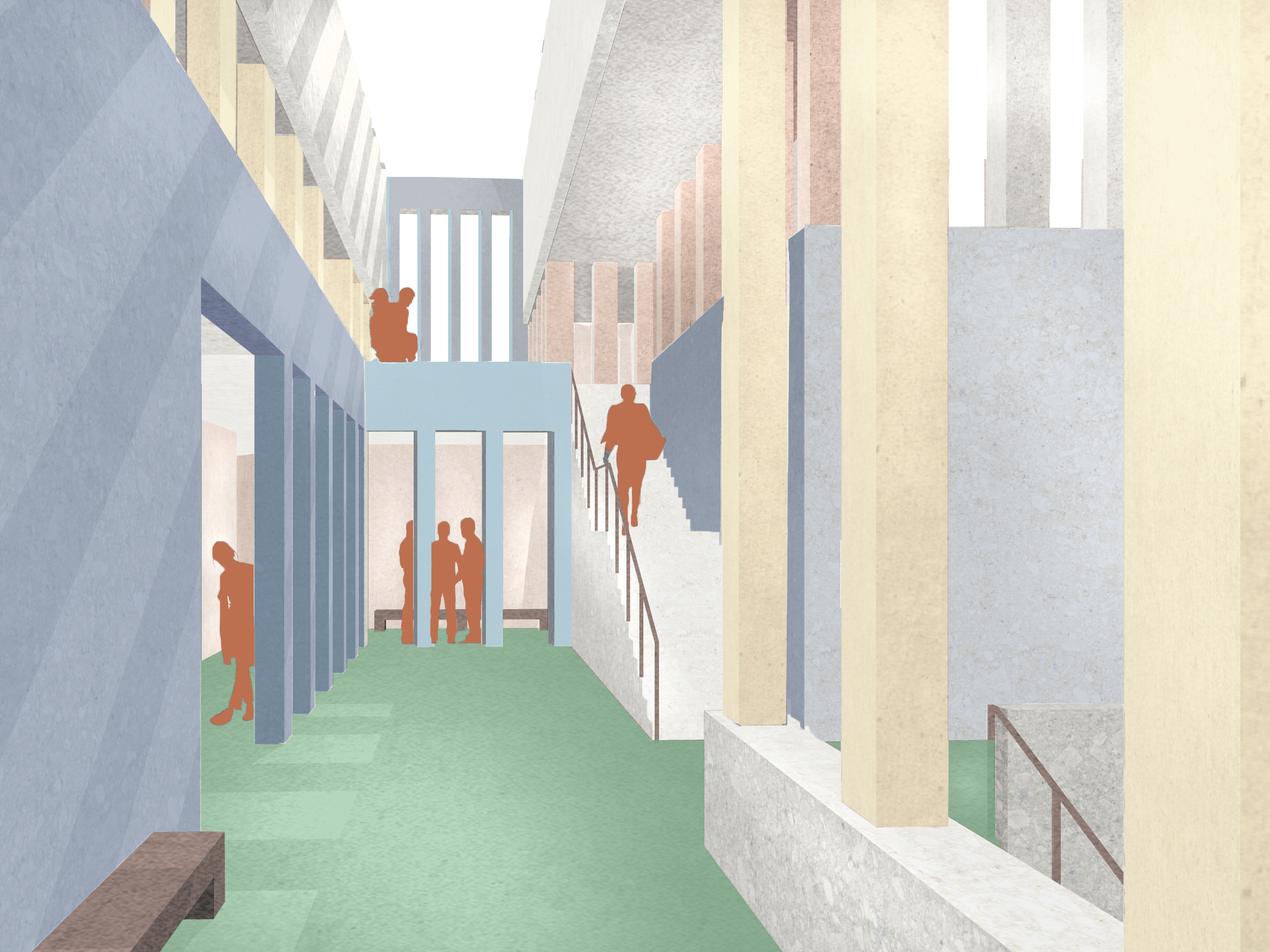

How can the architecture of justice contribute to the right of her existence? To deserve authority the law system has to put effort in its imagery. This symbolic design of the law court in Nanterre, Paris, explores an architecture which belongs to an adequate experience of the law: a formal orderly yet humble architecture that shows respect to citizens by giving the feeling that they are not subject to subjectivity. Clearly defined spaces enable to control how the building is being experienced. Principles inherent in the judiciary, such as transparency, accessibility, and equality, are not centralized but accomplished in a balanced manner through carefully chosen perspectives and see-throughs. They should not result in a feeling of being overexposed, neither in a false sense of accessibility.

This building separates two types of law suits: where the judge acts as verdict maker and as mediator. A sequence of spaces embodies the specific activities of the court in shape, light, and materialization. The hallways surrounding the mediation rooms have multiple layers of space with different feelings of privacy.

